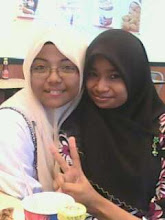reaction.
MOLECULE:A group of two or more atoms which are chemically bonded together .
ION: A positively-charged or negatively-charged particle.
THE KINETIC THEORY OF MATTER
SOLID
- Has fixed volume and shape
- Cannot be compress
- The particles are packed closely together in an orderly manner
- There are strong forces between the particles.
- The particles can only vibrate and rotate about their fixed positions
LIQUID
- Has fixed volume
- It does not have a fixed shape but takes the shape of the container
- Cannot be compress easily
- The particles are packed closely together but not in orderly arrangement
- The particles are held together by strong forces but weaker than the forces in a solid
- The particles can vibrate, rotate and move throughout the liquid.They collide against each other.
GAS
- Does not have fixed shape or volume
- Can be compressed easily
- The particles are very far apart from each other and in random motion
- Weak forces between particles
- Can vibrate, rotate and move freely.The rate of collision is greater than liquid.
ISOTOPES AND THEIR IMPORTANCE
WHAT IS ISOTOPES?
: Isotopes are atoms of the same element with different number of neutrons
USES OF ISOTOPES
- Cobalt-60 = Used in Radiotheraphy for the treatment of cancer
- Gamma Rays of Cobalt-60 = Used to destroy bacteria in food without changing the quality of food.
- Carbon-14 =used to estimate the age of fossils and artefacts
- Phosphorus-32 = study the metabolism of phosporus in plants
- Iodine-131 = used to diagnose thyroid glands diseases

Tiada ulasan:
Catat Ulasan